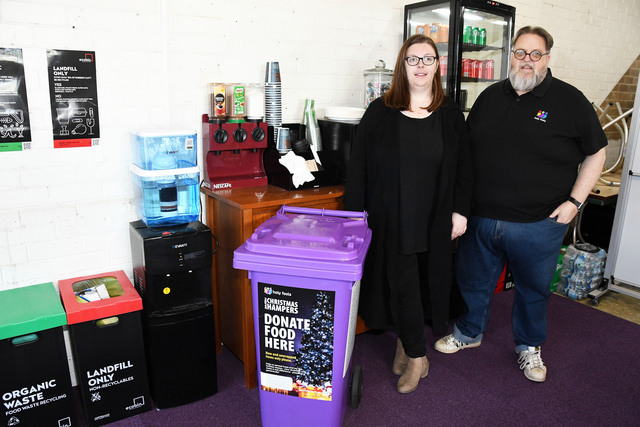Insurance prices are a hot topic ahead of election time and new analysis has indicated home insurance prices in the Outer East might be among the most expensive in the state
Financial comparison site Finder picked an address in each suburb of 31 Melbourne LGAs, obtained three quotes from major insurance providers and found an average figure from each.
Lilydale and Ringwood in Yarra Ranges and Maroondah each featured in the top five of those selected, while Wantirna in Knox also made the top 10 highest average price.
Finder insurance expert Peta Taylor said it’s hard to pinpoint exactly what causes an increase in premiums because insurers all calculate risk differently.
“When an insurer assesses the risk of an area to determine a premium, they’ll look at; natural disaster risk (bushfire, flood, storms), the cost of labor and materials for rebuilds, any prior claims, crime rates in the area and general inflation,” she said.
“There’s not a lot of regulation around home insurance prices so that means insurers have the freedom to be as price competitive (or not) as they want,”
“That’s why it’s always worthwhile shopping around, two almost identical policies can be priced thousands of dollars apart for no real apparent reason.”
In Ringwood, Finder was quoted $1889, $3452 and $2320 for an average price of $2557, the second highest average of LGAs covered in the analysis.
In Lilydale, the prices received were $1990, $2169 and $3049 for an average of $2403 (fifth highest in the state).
Wantirna rounded out the top 10 with prices of $2267, $2514 and $1940 for an average of $2241.
In nearby Cardinia, Pakenham was the suburb chosen and it was one of the lowest cost of LGAs with quotes of $1982, $1491 and $2193 for an average of $1889.
Ms Taylor said underinsurance is dangerous because it leaves people’s largest asset, their home, unprotected.
“This means they stand to lose hundreds of thousands of dollars, and that’s just if we’re discussing the financial issues, there’s obviously a lot more that comes with being forced out of your home without any financial support,” she said.
“The thing about insurance is that it needs to be in place before the problem hits — whether that’s a burst pipe or a bad storm and if you don’t, then you’re not eligible to claim,”
“This means you can’t afford to go without it and then buy a policy when you hear that a bad storm is coming or see that you’ve got water damage from something, it’s a huge gamble to go without home insurance, which makes its excessive expense even more troublesome.”
Ms Taylor gave an example where slight differences in product, such as the limit of a benefit like lock replacement, were an insurer offering a lock replacement limit of $500 will be cheaper than one with a limit of $1000.
Ms Taylor said shopping around for the best price is critical and comparison could be a difference of thousands of dollars.
“We’ve done a heap of research and we know there are policies out there that are charging an arm and a leg, yet offer less coverage than those who are cheaper,” she said.
“Knowledge is power with this stuff, always take the time to shop around and really understand what you’re actually covered for, you can use our Finder Score to help understand which policies offer good value for money.”
Ms Taylor gave a list of ways local residents can look to save money on their insurance:
Reassess cover, removing optional extras that aren’t a priority
Increase your excess to a larger but still affordable amount
Reevaluate other bills, such as mobile plans, for saving opportunities
Look for monthly premium providers, avoiding any with additional costs for doing so
Call your insurer about price flexibility, or compare and switch
A spokesperson from the Insurance Council of Australia (ICA) said insurers are very aware of the impact that inflation is having on the price of cover, driven by ongoing inflation in the building and motor repair sectors, the jump in reinsurance costs globally, the rising cost of extreme weather, and the increasing value of their assets.
“Additionally, Australia’s most densely populated areas on the east coast are exposed to our most expensive extreme weather events, a scenario that’s unlikely to change quickly,” they said.
“One immediate way that premiums can be reduced in cost is the removal of unfair taxes and levies. In 2023-24 , the states earned $8.6 billion in stamp duty from insurance, which is almost 60 per cent more than insurers collectively made in profit that year, this financial year the Victorian Government estimates that it will collect $2.2 billion in stamp duty directly from insurance customers.”
The ICA in March released a pre-election policy platform called Advancing Australia’s Resilience, which included a call for a $30.15 billion Flood Defence Fund to better protect flood-exposed communities and homes in Queensland, New South Wales and Victoria, including around the Yarra River.
The ICA spokesperson said in Victoria, communities in the Goulburn River and Yarra River catchments were identified as priority areas for funding.
“Investment in mitigation such as critical flood defence infrastructure, strengthening properties in harm’s way such as through retrofits, funding managed relocation (buy-backs) and future-proofing existing flood mitigation infrastructure will help protect communities from flood risk,” they said.
“Insurance prices risk, and a higher premium generally indicates higher risk. In particular, floods pose a critical threat to Australia, around 1.36 million properties are at risk of flooding, and it is estimated that half of these properties fall short of the flood resilience measures of modern planning and building standards.”
“There are some things though that all customers can do to lower the price of their insurance, the ICA’s strong advice for all customers is to shop around and compare policies to find the best deal, customers can also explore simplifying their policy and lifting their excess to help moderate the cost of their insurance premiums.”







